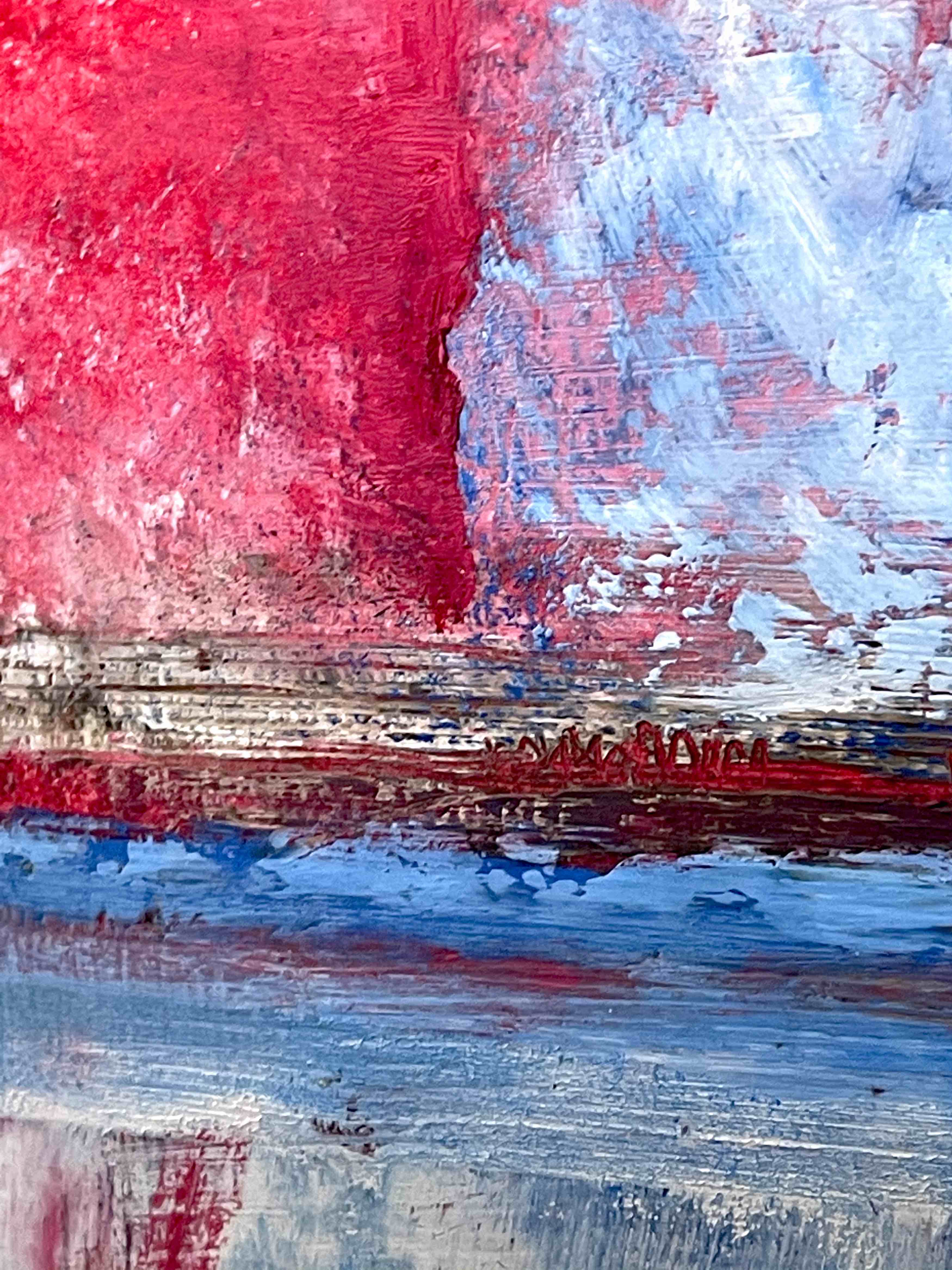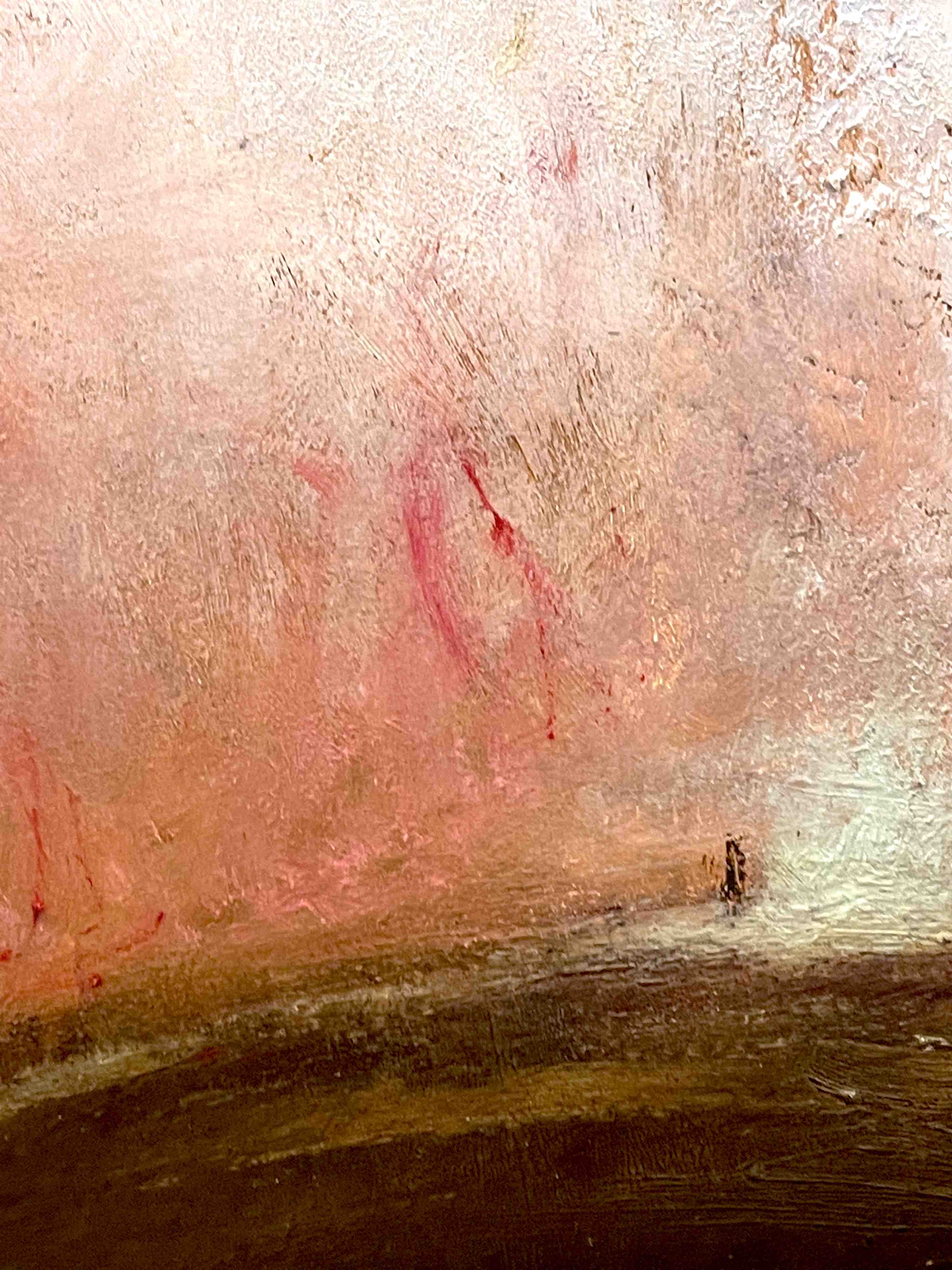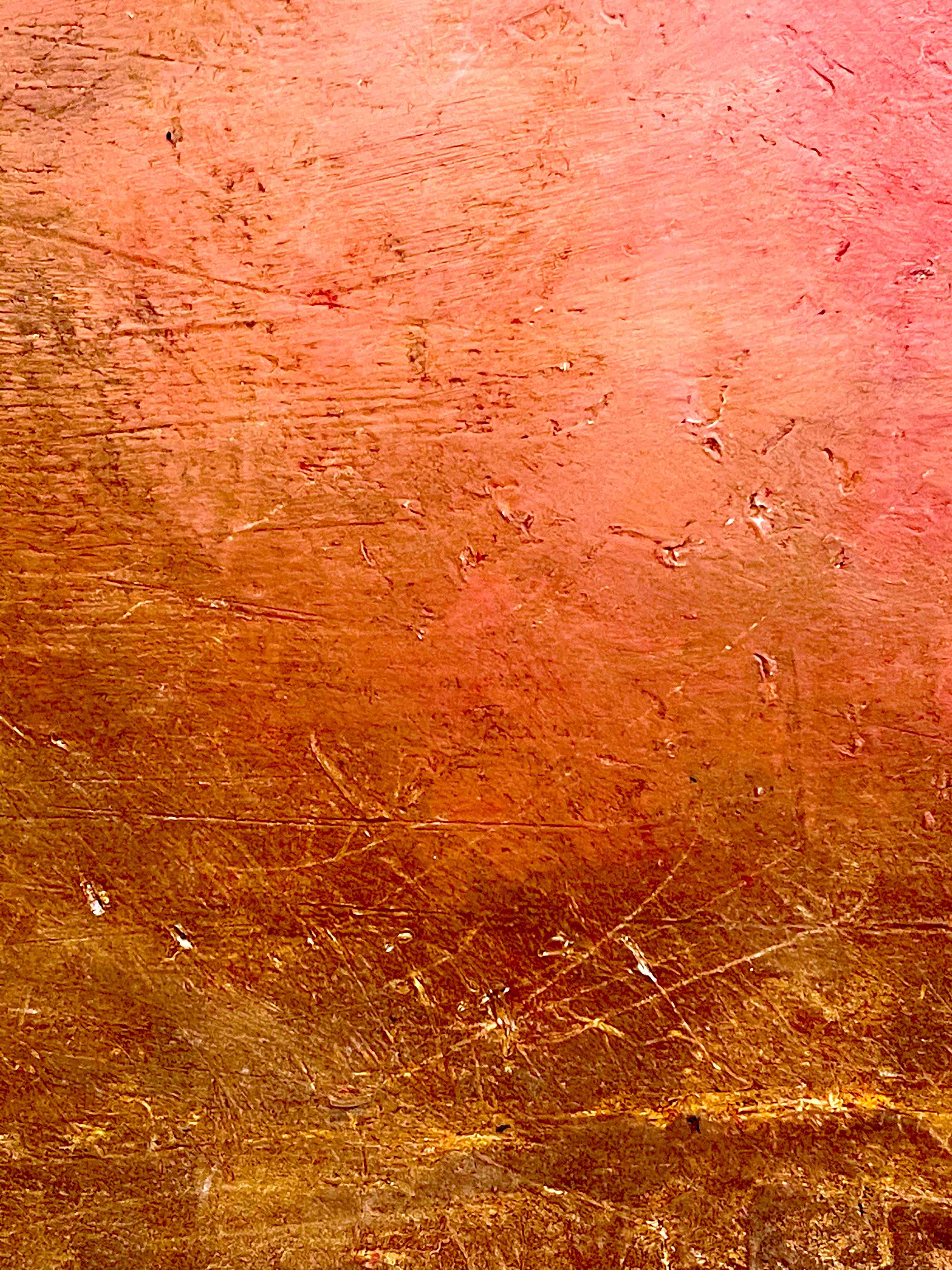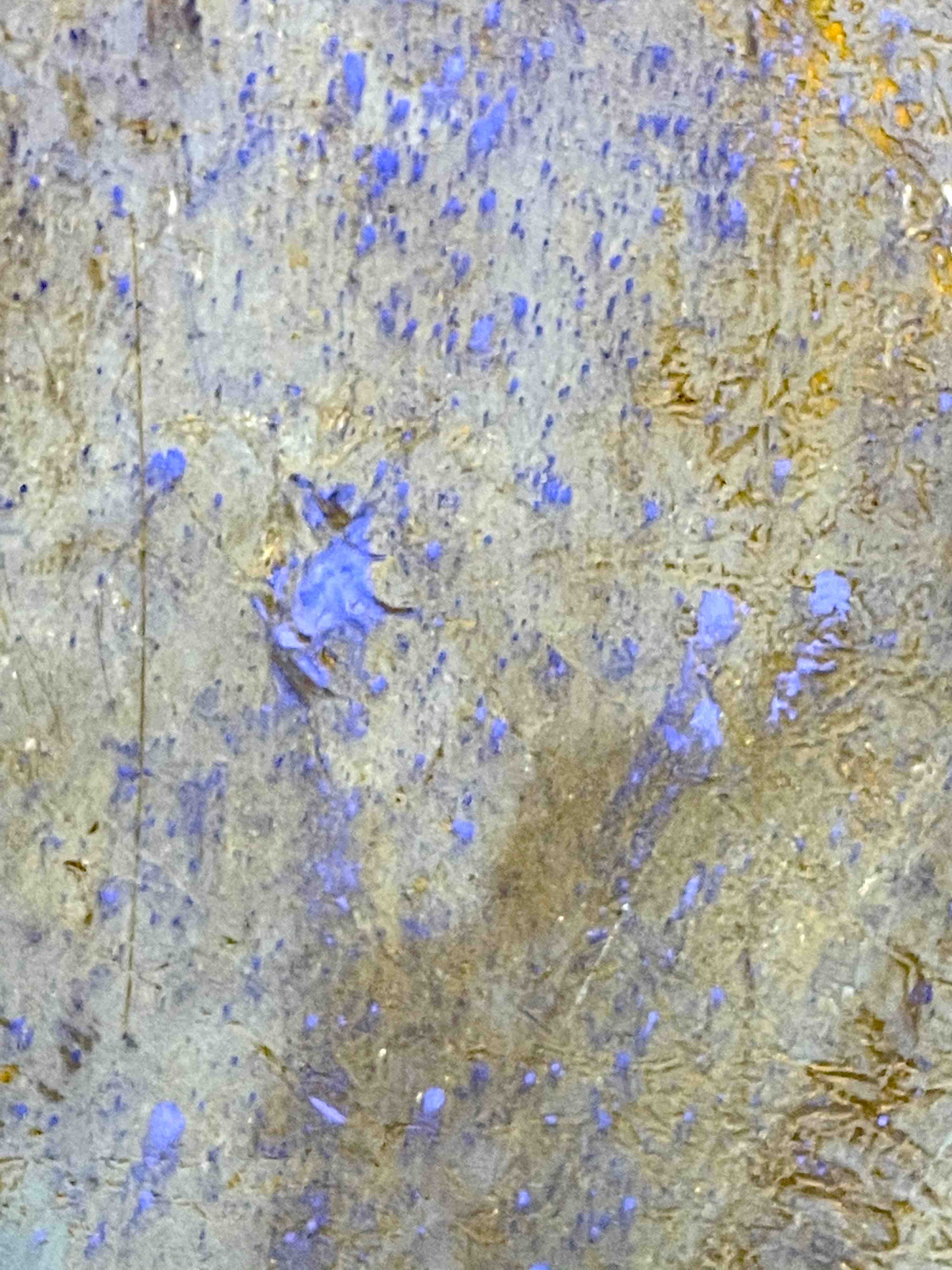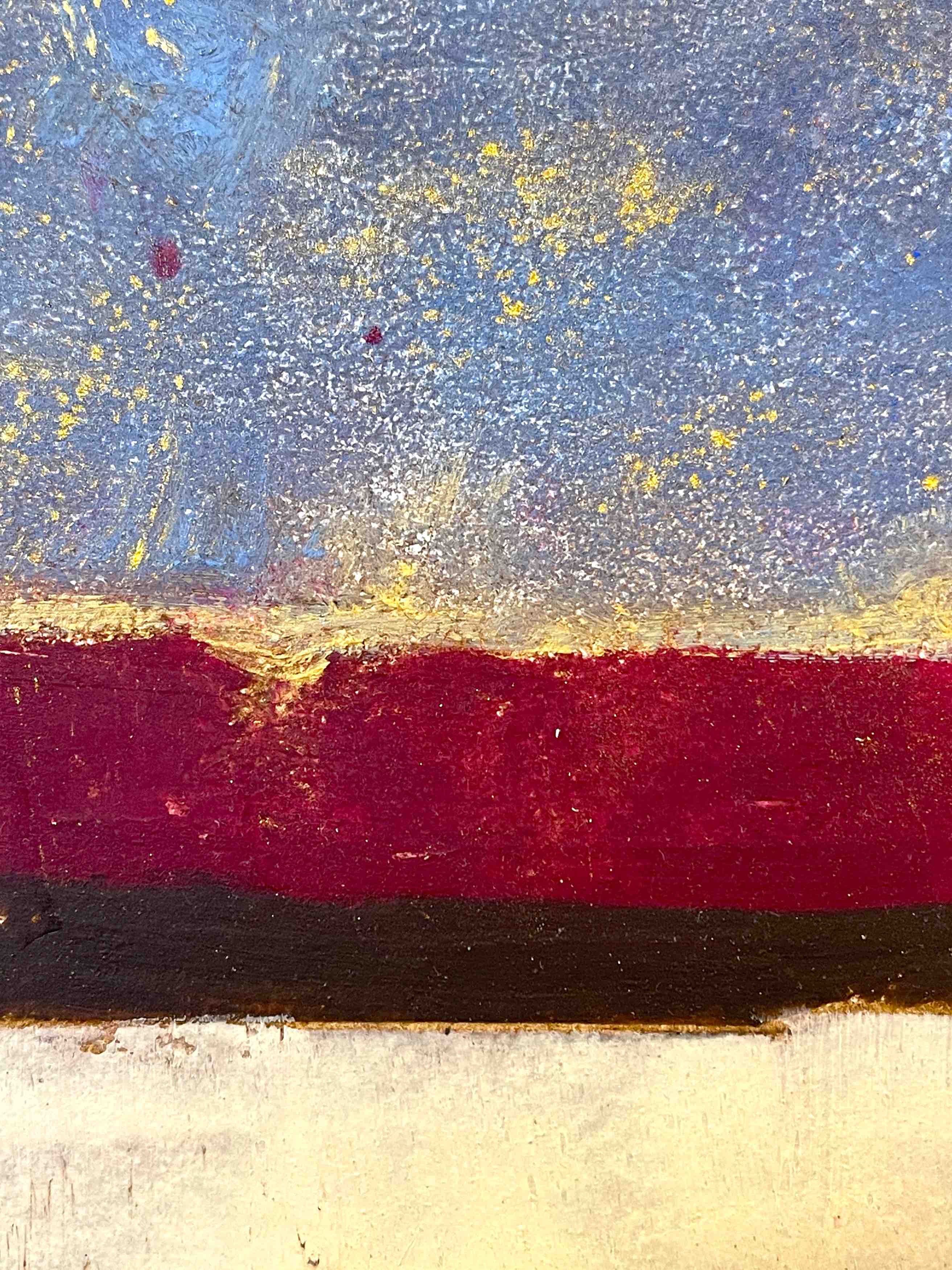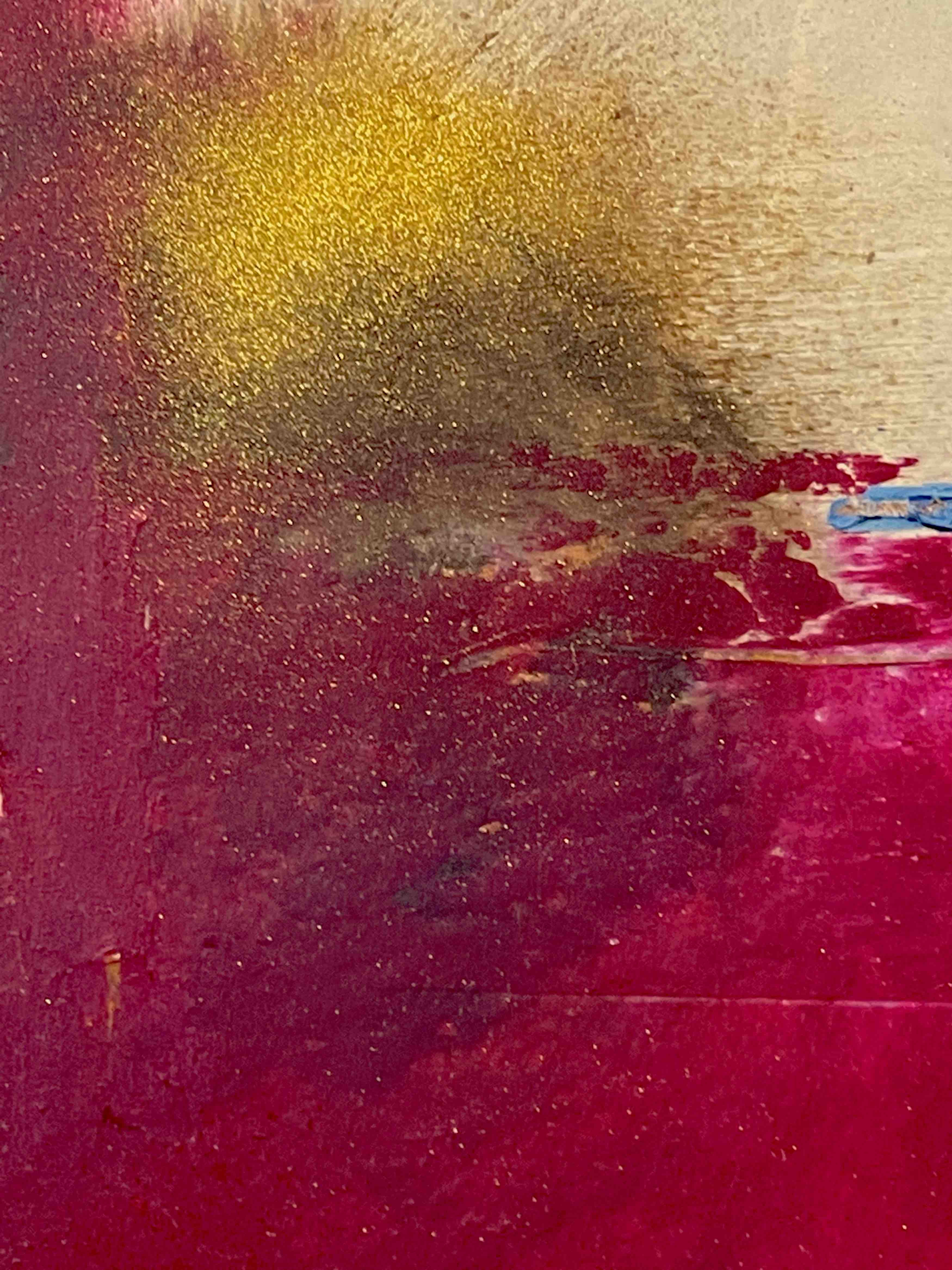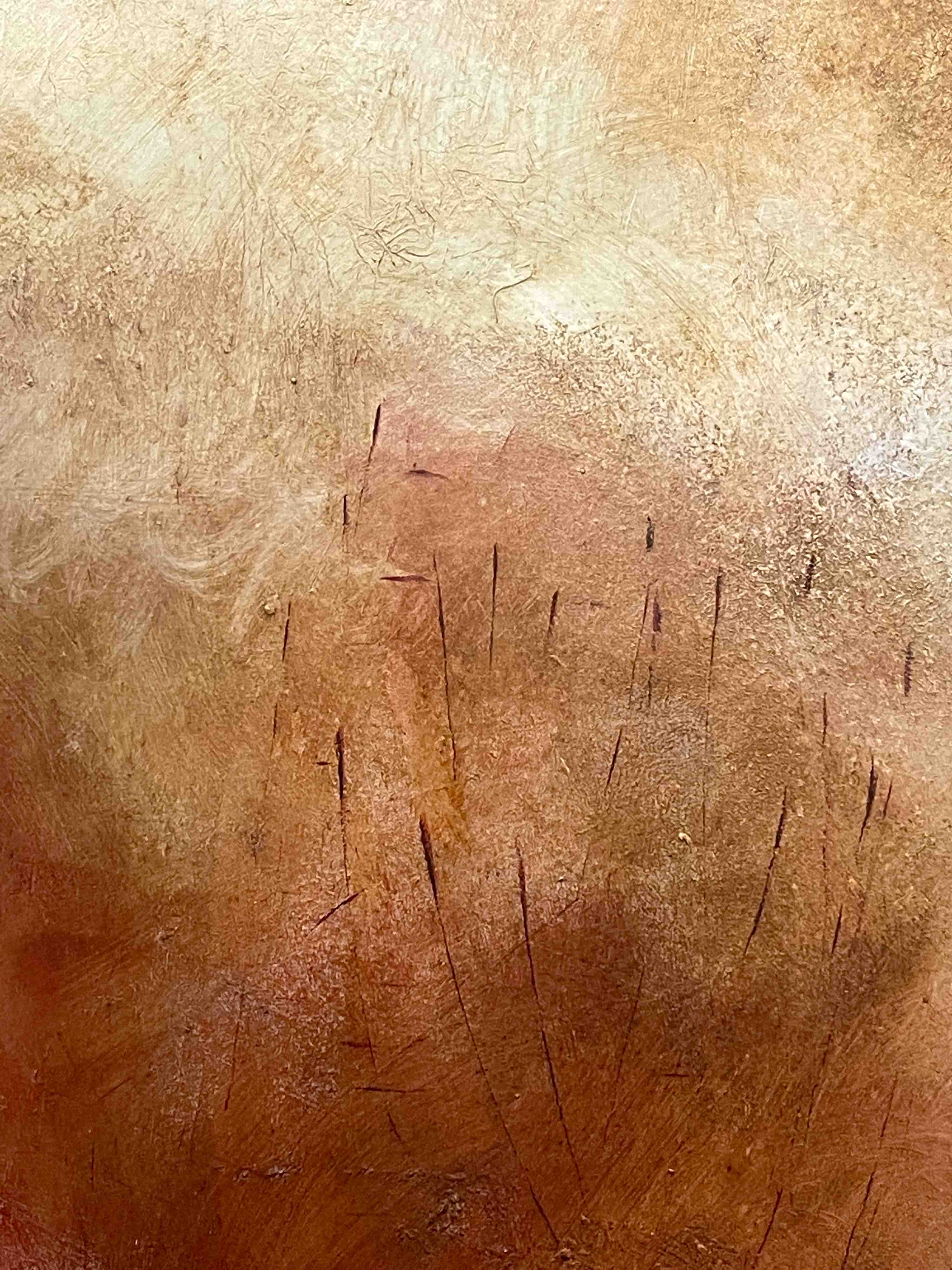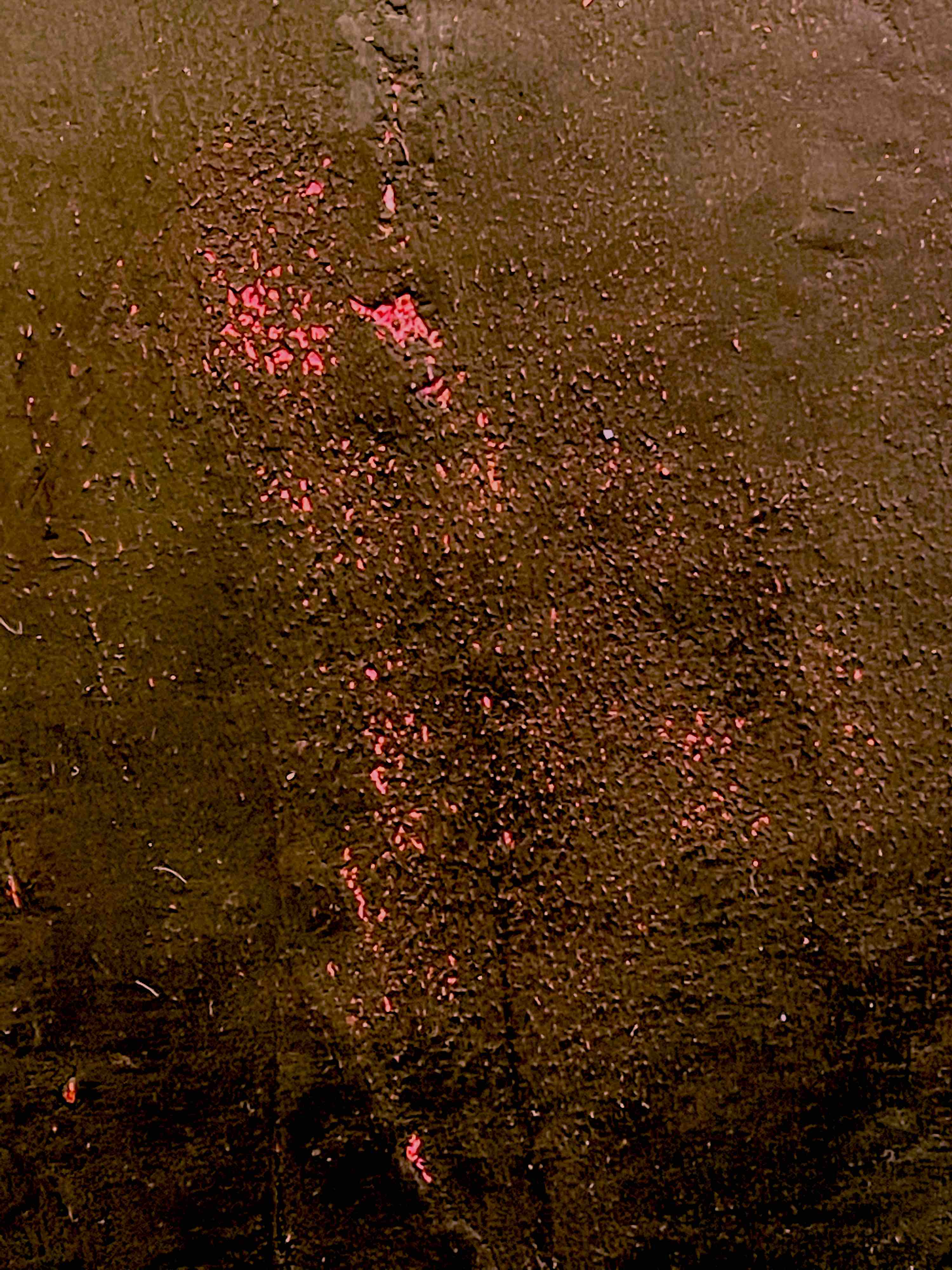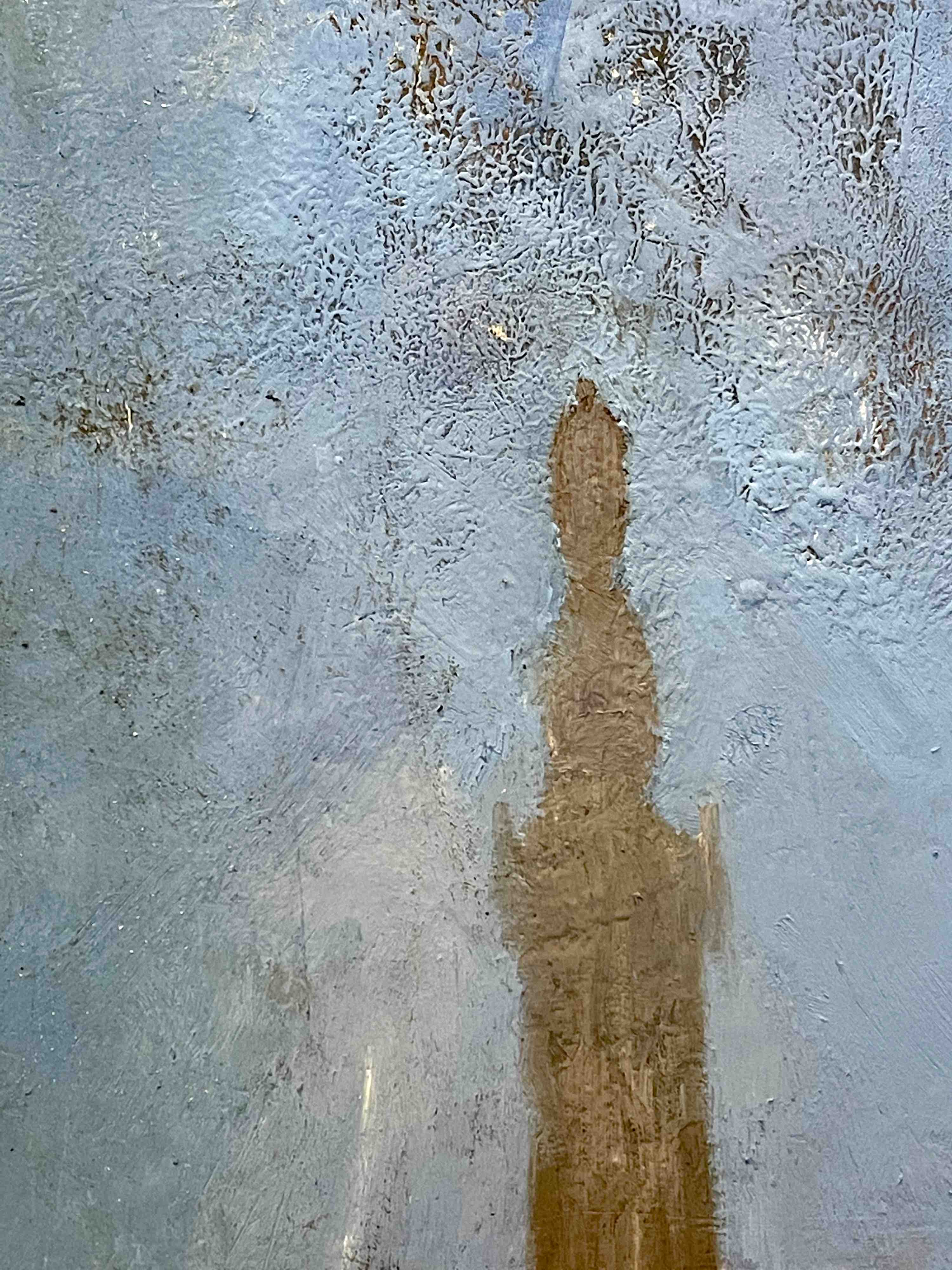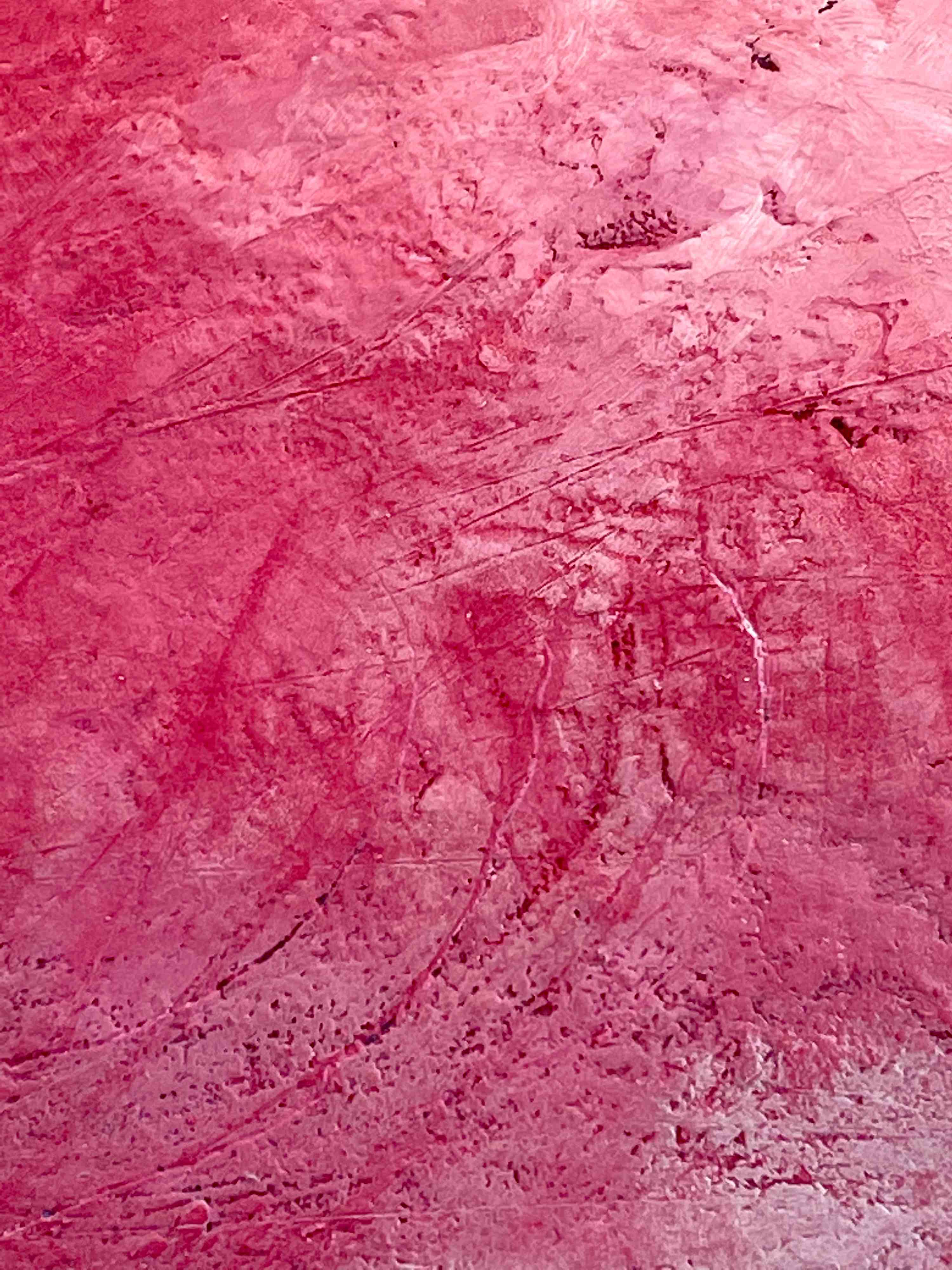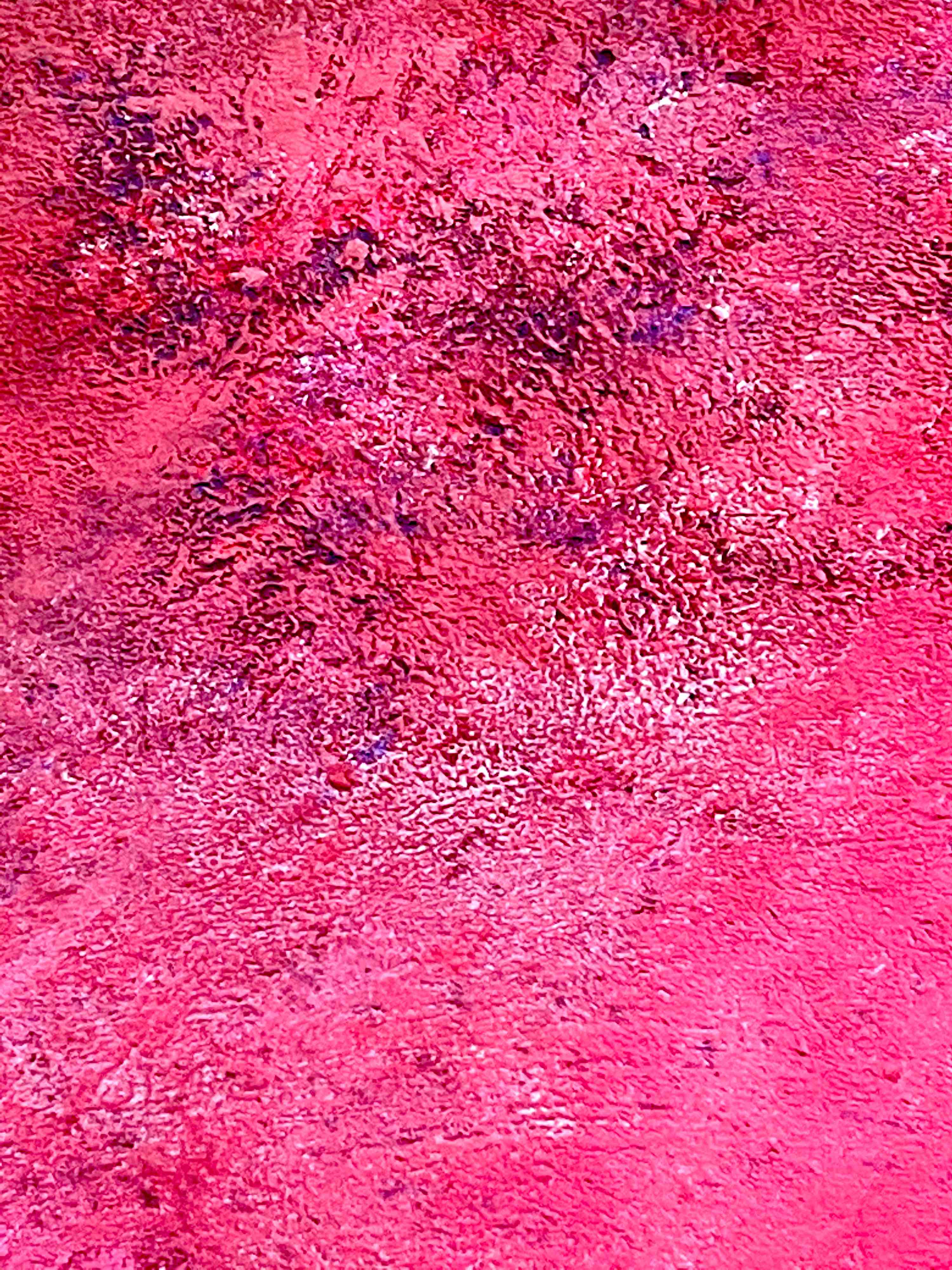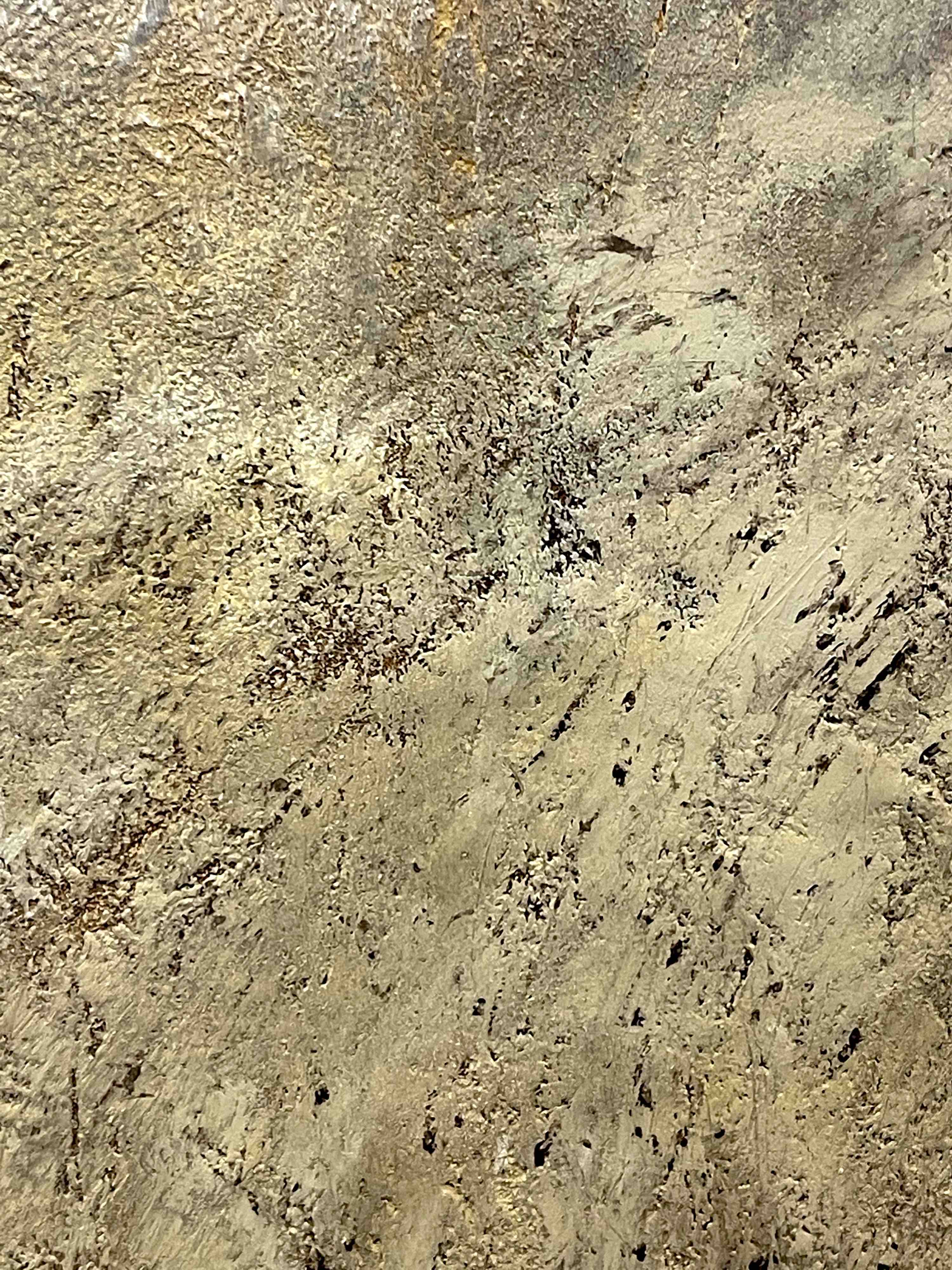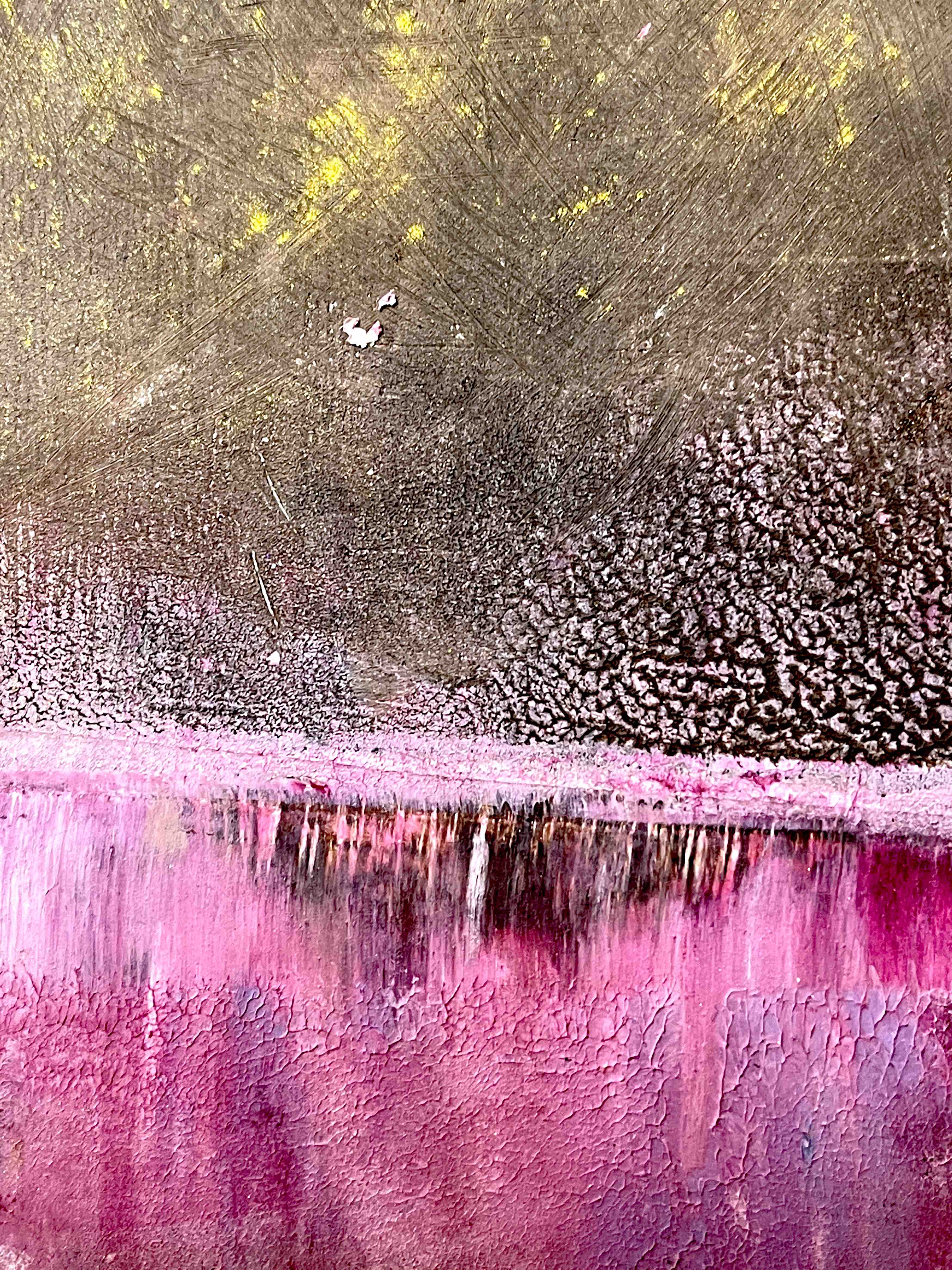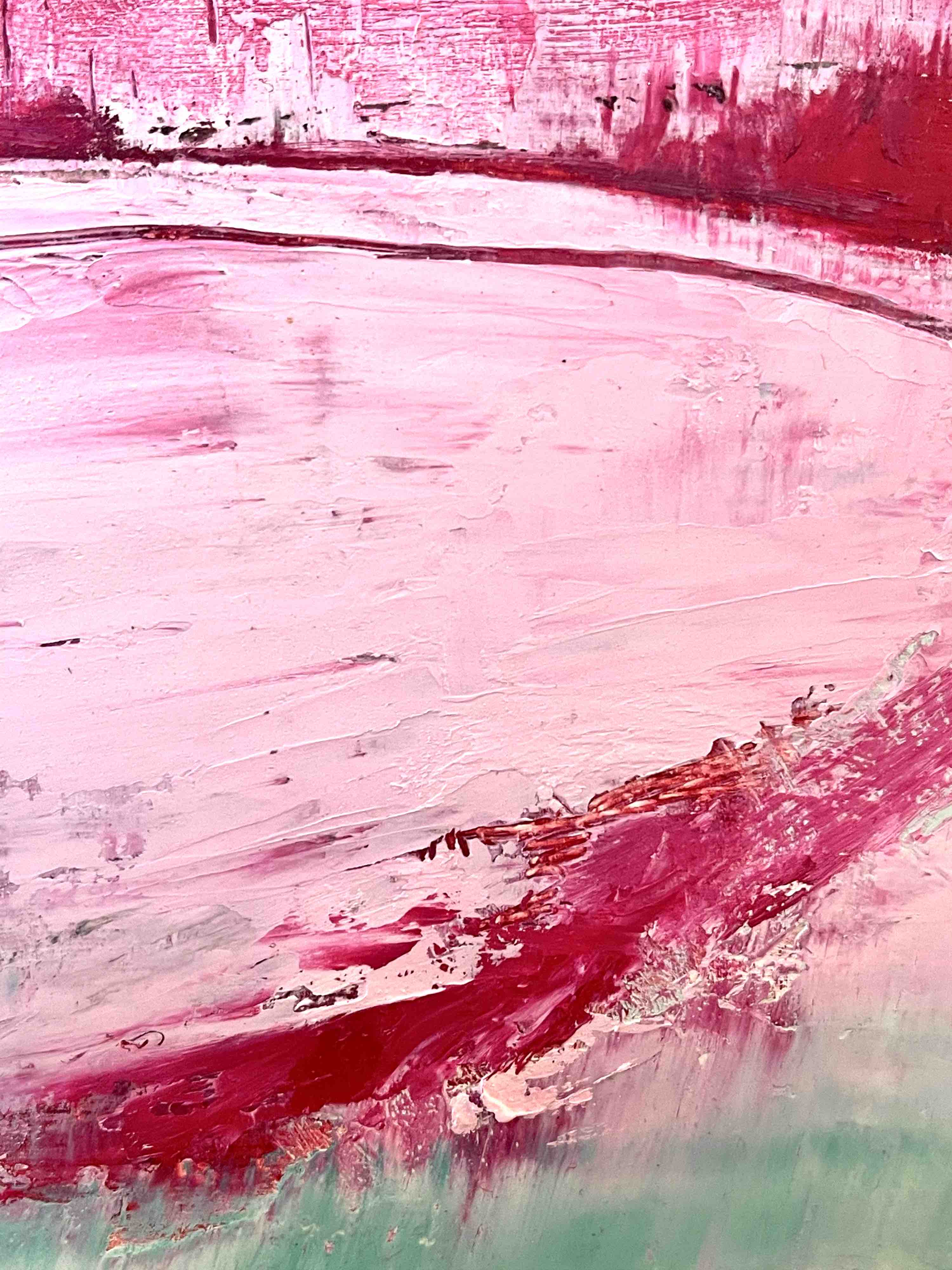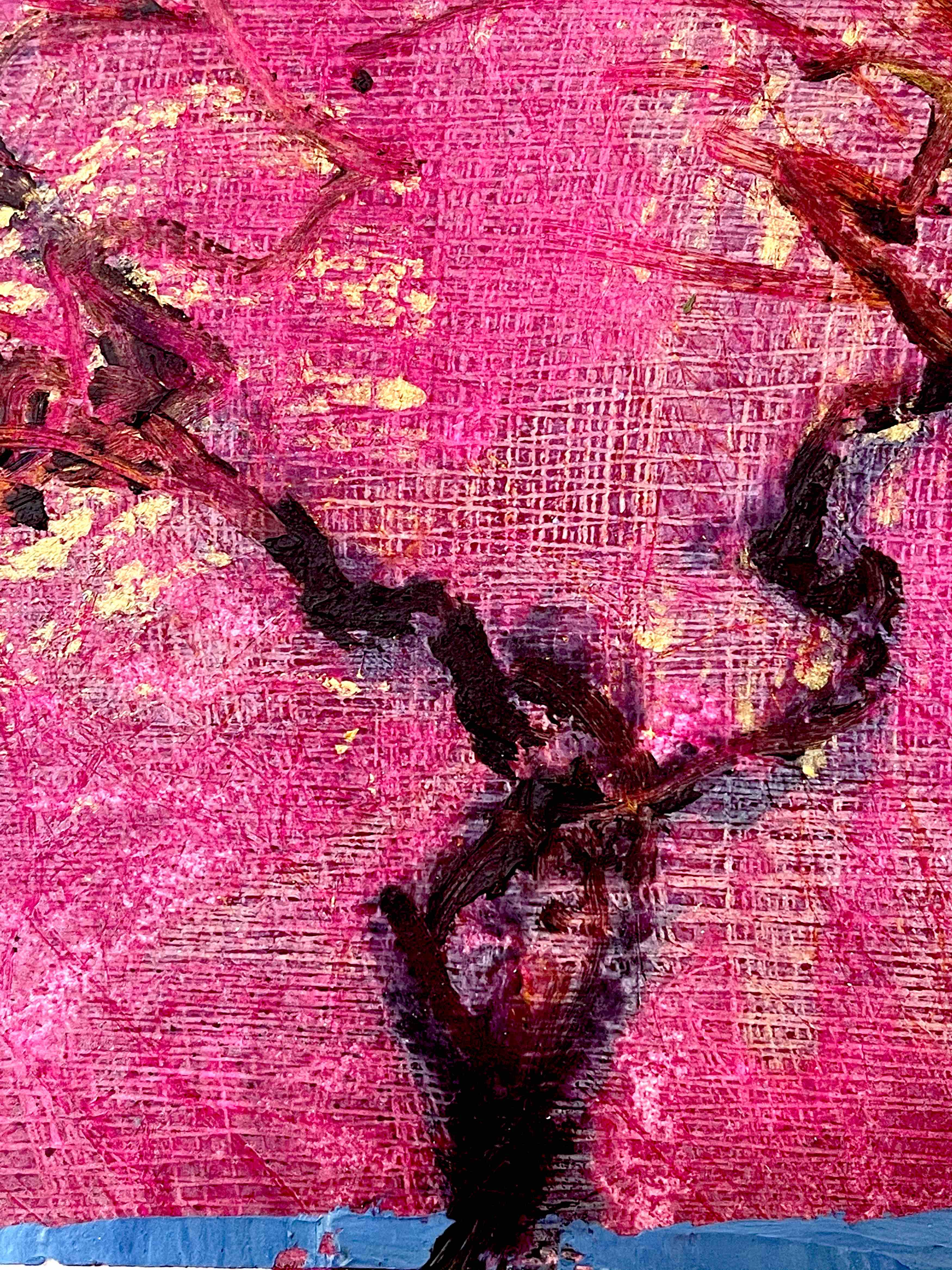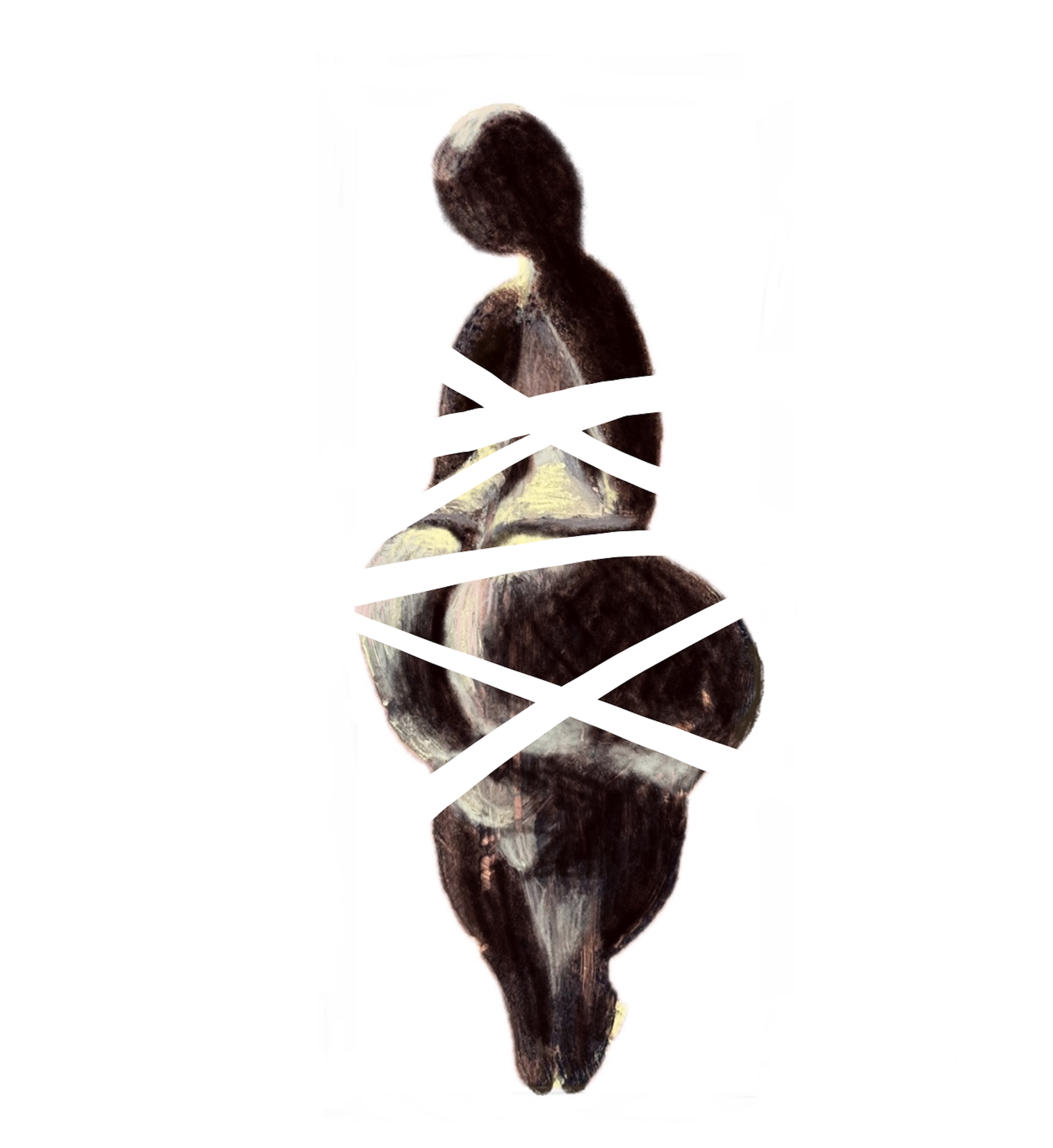Painting with cold wax

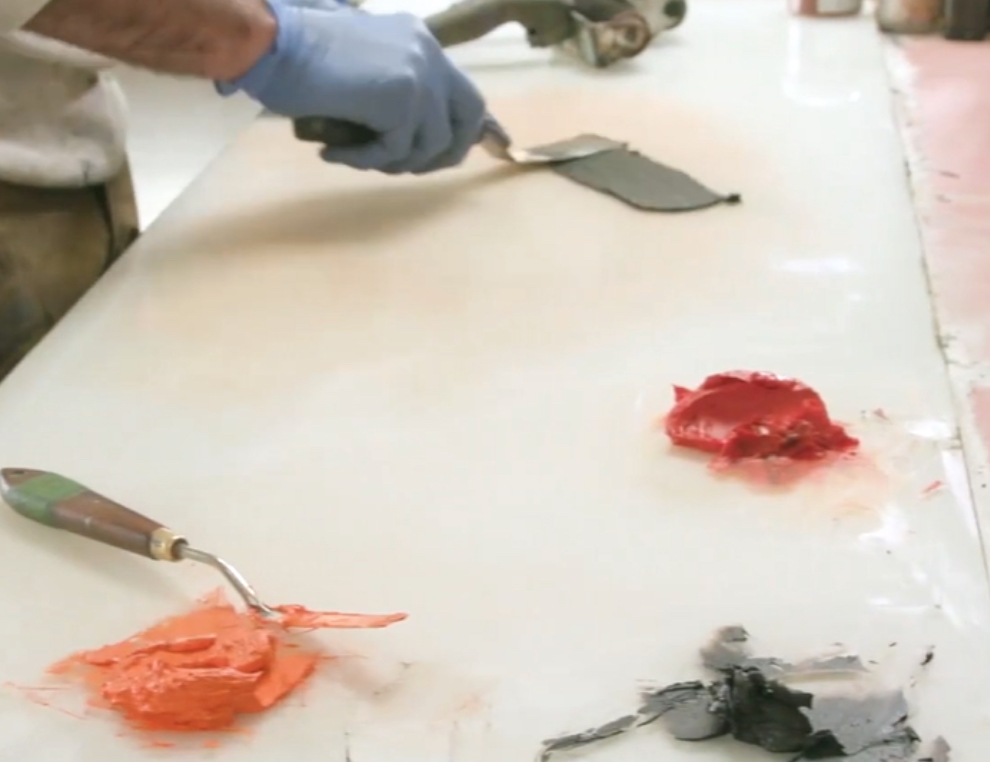

There are many different brands of cold wax medium. I use Gamblin, but there are also lots of recipes online to make your own.
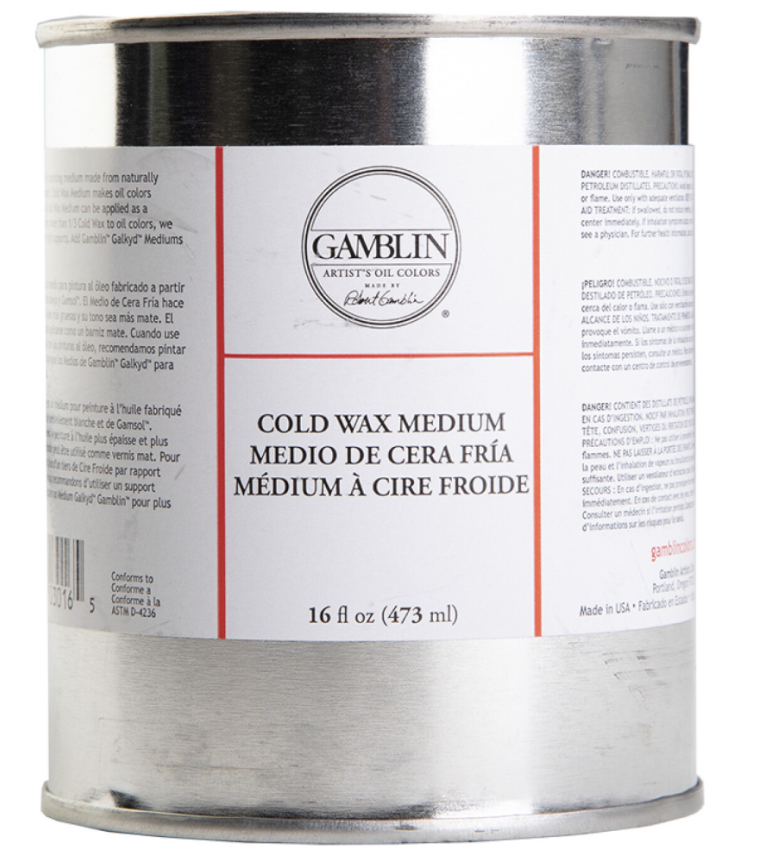
Gamblin cold wax
Cold wax is predominantly used by abstract painters because the medium lends itself to a process-driven approach to painting and artists that have mastered the use of wax produce gorgeous abstract works that succeed entirely on texture, tone, colour and composition. I have found that experimentation and serendipidty play a key role in learning the endless possibilities for what wax can do, and there is definitely something to not being too attached to where the surface leads you that is specific to cold wax medium. Some of my best works have come from former fails underneath and then boldly just covering it all up with successive layers as I was taught because wax has a wonderful translucent quality that allows light to pass through to previous layers, so there is a distinct benefit to adding more layers. Additionally when you mix wax with paint it allows you to spread paint very quickly. All these elements lead to a sumptuous feeling in the artwork and although it was unnerving at first, coming as I do, from a traditional methodology. But now I do not mind if things dont go to plan as nothing is wasted with this medium, although you can end up with a large painting that weighs about 10 kilos.
Note; Cold wax medium tends to dry to a matte finish. You can add other mediums to the cold wax if you intend to have more of a gloss finish. One of the best resources for cold wax painting is The Cold Wax Academy (my brilliant and generous teachers and 2 great cold wax painters) Rebecca Crowell and Jerry McLaughlin. Their award winning book and many other resources can be found at their websiteThe Cold Wax Academy
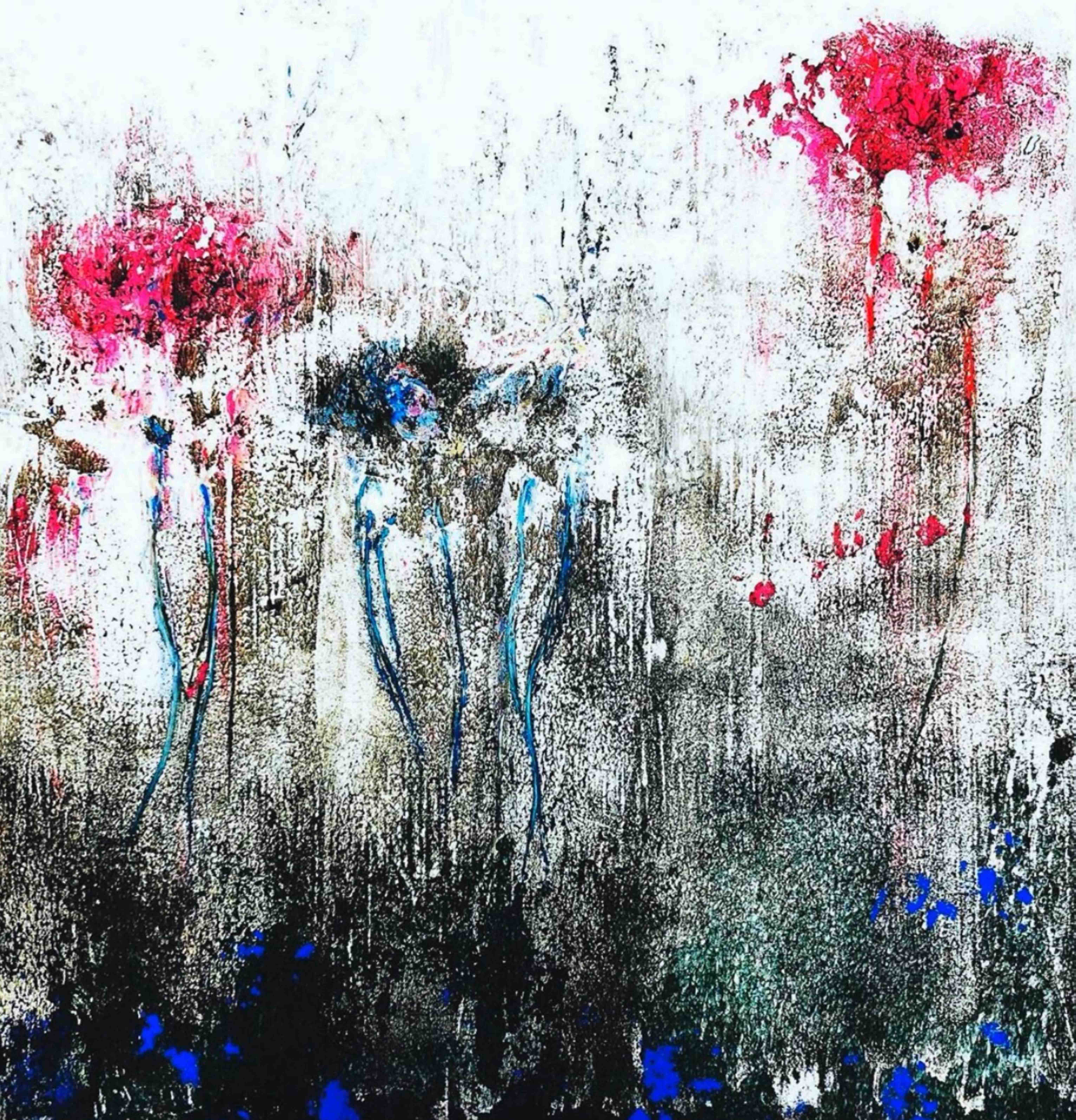
my first foray into wax painting
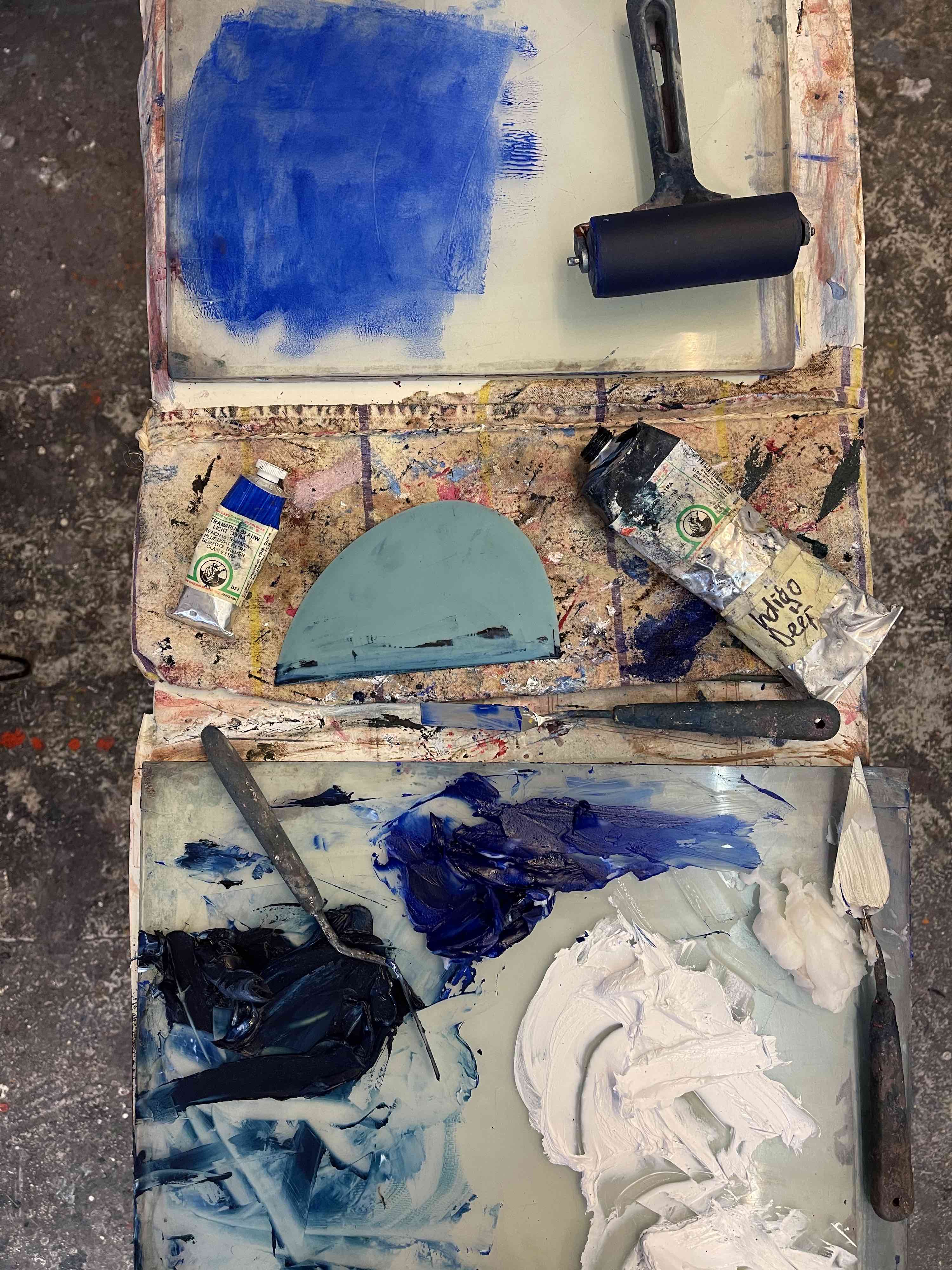
mark making & the surface
One of the things I most love about wax painting is that the more layers you have, the richer and more substantial the finished work will most likely be. Directly applying layers, combined with scraping back into previous layers, adds to the complexity and effects that can be achieved. I started painting as a traditional oil painter and I still do paint without wax but it is a very different world one is creating so one disticntion I have learned is that if a picture doesn’t work out, in my case, it is often that the idea may be more suited to a thinly painted picture may not include wax.
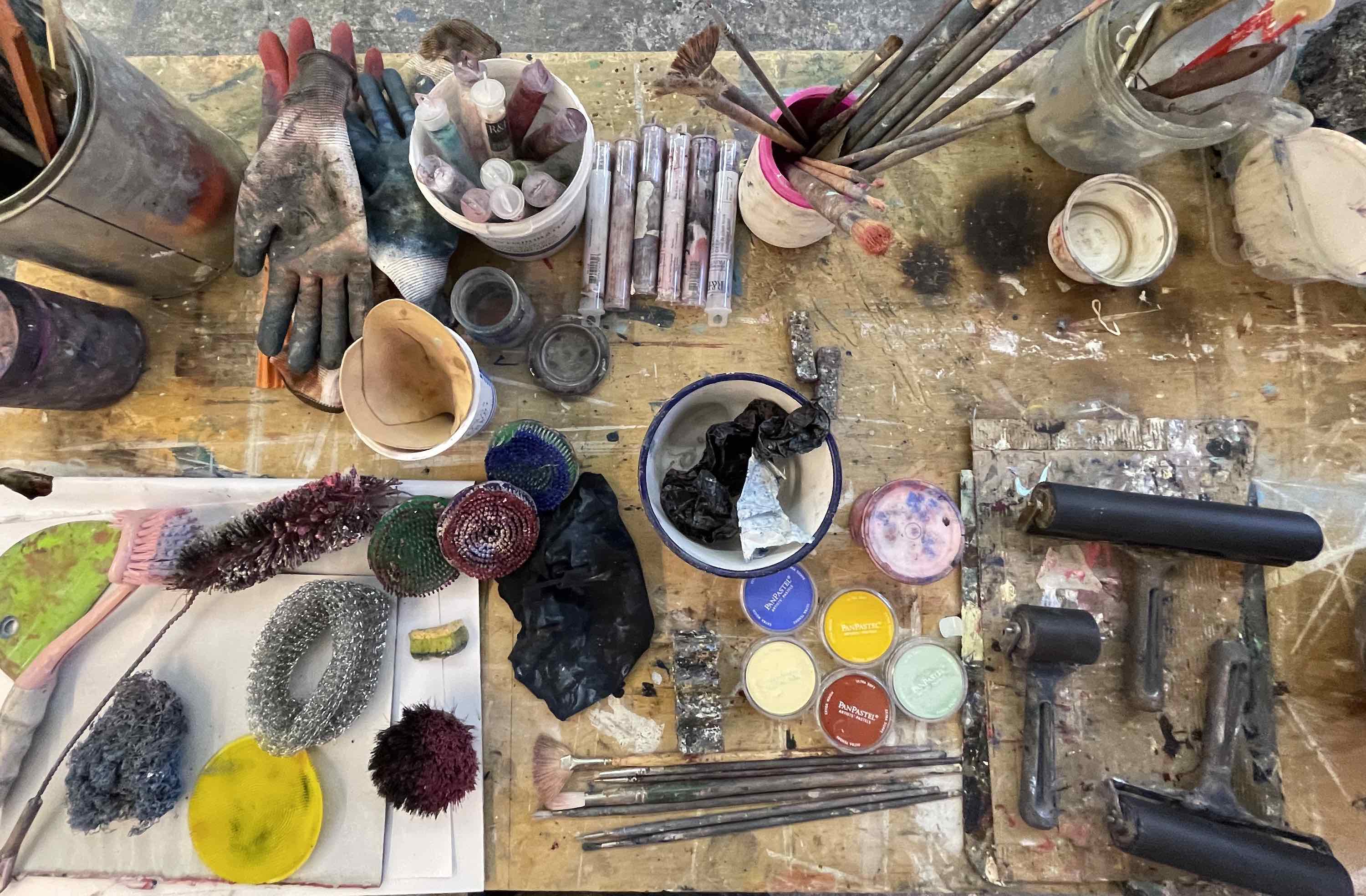
Because of the benefit of many layers I do find I am often in a place where I am looking to see where the work takes me which is an exciting edge to sit with. This allowance, of letting the surface guide me can progress with perhaps a translucent veil of colour, with a brayered layer of thick opaque paint or a highly contrasting layer or a combination of the former, one after another that I then dig back into with a palette knife or a skewer or steel wool or with bottle brushes which are a particular favourite. Another way I like to go is to pressing paper into the wet opaque layer to peel off a layer of fresh paint and create a variety of marks, all of which can be smoothed out or softened with a brush or a palette knife. The thing to watch for is when a work starts to come together and for me that is when there is enough going on to pick out perhaps a landscape that has emerged through the combination of elements in the layered work, or I can see how one of my long held ideas, or motifs, or studies will be perfectly suited. That is when I take brush in hand and paint in details and refine the work its conclusion. I am after all a painter first and foremost, not just a wielder of kitchen implements.
Following are some examples of effects that can be achieved with cold wax medium, paint and dry pigment.
︎



